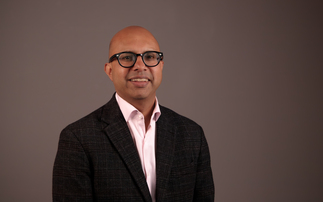PP editor Jonathan Stapleton speaks to NEST Insight Unit head Matthew Blakstad about financial resilience, NEST's sidecar savings trial and the broader impact of AE phasing.
Jonathan Stapleton: Can you tell me a little bit about the NEST Insight Unit and your role within that unit?
Matthew Blakstad: As most people will know, NEST is a very large pension arrangement and we've currently got over 7 million members.
One of the things that scale gives us the ability to do is carry out collaborative research and work with academics, charitable foundations and other bodies who have an interest in helping create better outcomes for people who are saving in defined contribution (DC) plans. These projects not only help people use NEST better but also think about how to create better outcomes for the whole DC population, not just in the UK, but right around the world.
We conduct these projects with the support of funders - such as the Single Financial Guidance Body, a number of charitable foundations and some asset managers - who have an interest in supporting that kind of work.
Jonathan Stapleton: Why do you think financial resilience is important, both from the short term and the long term perspective?
Matthew Blakstad: People often wonder why NEST is thinking about people short term financial resilience at all - surely, we're there to help people over the long term. But one of the things we've realized quite quickly is that you can't really help people deal with their long term saving needs without thinking about how things look for them in the short term; both in terms of their financial resilience and their financial capability.
We know, auto-enrolment been a huge success; and we've now got 10 million people who, because they've been auto-enrolled, are going to get more income in retirement than they would have done otherwise.
But we also see that nearly half the UK population don't have £500 on hand in liquid savings. And that's the average cost of a financial emergency, which people might have every two or three years. So from that point of view, there's a big worry - you can be very successful at creating a nation of people who are saving for the long term but if they're washing machine breaks down, they might end up in a situation where they can't access that money and end up in costly debt - a situation that could quickly spiral and impact your psychological wellbeing and things like your attendance at work and your pension contributions.
These sort of debt spirals can ricochet right through into retirement so if we try to think about how to give people a good outcome in retirement, we can't just focus on how much is going into their pension pot.
Jonathan Stapleton: NEST has just launched it sidecar savings trial. Can you tell me a little bit about the rationale behind that?
Matthew Blakstad: As I've said, we think it's really important to try to think about how resilient people are in the short term, that they have enough liquidity to be able to deal with the sort of financial shocks and pressures that hit us all unexpectedly. There's a lot of really fantastic work going on among the academic community to try to understand how to help people balance their liquid and their illiquid savings needs. And one idea that really interested us, which comes from a couple of US academics - Brigitte Madrian from Brigham Young University and David Laibson from Harvard University - is this idea of sidecar savings.
The idea is really simple. If you've got a population of people who are already being auto-enrolled into a pension, they are already saving in an illiquid pot, which you want to make as big as possible. All you do is add alongside that a small liquid pot - a savings pot - that they can access in an emergency.
This is facilitated by the employer - so when the employer is taking contributions from pay, they put a bit of money into the liquid pot as well as into the illiquid pot. The employer continues to make the minimum AE contributions into the pension scheme but asks employees if they want to pay a little bit more every pay period. Initially, all of this additional contribution goes into the sidecar pot, because we think that's people's priority in the short term but, over time, as they build up savings, we start moving some of that money into the pension pot. What that means is you can potentially help solve both short term financial needs and also the need to save more for the future.
Jonathan Stapleton: How does the sidecar savings trial work?
Matthew Blakstad: In practice, sidecar savings are a pretty simple concept and the project is built around the way that AE already works - a really important part of AE is that every pay period, you're getting a little bit of money taken out of your pay and put away somewhere for you. We're just talking about extending that to sidecar savings. So, if an employee has opted into sidecar savings as part of this trial, what will happen is their employer will take a little bit more money out of their pay each period, perhaps about £25 or £50 pounds a month depending on what people have chosen to save.
Initially, all of that money will go into an instant access Yorkshire Building Society savings account. But once this savings account reaches a certain threshold, which might be around £1,000, we will start using these additional contributions to start topping up their pension pot. All of that's done through the same payroll mechanism that already manages auto-enrolment.
Jonathan Stapleton: You've done a lot of research into how people might react to sidecar savings. Can you can talk a little bit about that and tell us about the findings?
Matthew Blakstad: We were working very closely with MAPS, who is helping fund the project, and also supporting us on the evaluation of the project. And so we went out with them and talked to a number of people in our target population - people on moderate or low incomes who've tried to save in the past, but have really struggled.
We talked them through the sidecar idea, talked about the idea that the employer would help them save in this way. And we got a universally positive reaction to it. People particularly liked about the idea that it would all be handled by the employer; and that it would be very accessible.
Jonathan Stapleton: You talk about this being emergency money - is that part of the behavioural nudging you are trying to do?
Matthew Blakstad: There's a lot of behavioural research to show this idea of earmarking money really helps control people's behaviour, even with very low income workers. One of the things we've worked quite hard on is to try to think about what kind of labelling we should use for this account to help give people the sense of what it's for. A lot of people talk about rainy day savings and, initially, we thought that would be a really good thing to call it, a rainy day account. But actually, we found that different people think about rainy day money in different ways - some people think about it as money for emergencies, but other people might think about it as money for a dream holiday or another longer term goal. That's why we ended up calling it emergency savings, because that's the thing that everyone really understood described the purpose of the account.
Jonathan Stapleton: AE phasing ended in April, when total contribution rates for auto-enrolment increased to 8%. What do you think has been the overall impact of the phasing?
Matthew Blakstad: People are already saving more than they were when they were first enrolled, which is obviously great news. When the first phasing increase happened in April 2018, there was a really minimal impact on members. And actually, the opt-out rate that we're seeing now is pretty much exactly the same as it was before the phasing increase. So on the surface level, that's really good news. And I think it's important to remember why the government introduced phasing to start with - it's based on the behavioural finance idea of save more tomorrow. In other words, people are more inclined to commit to saving more if you ask them to do it, not this year, but maybe next year, or maybe when their pay increases.
The effect of moving the contributions up from an initial 2%, up to 8%, over a couple of years is a really good example of how to make that work. As these increases happened at the beginning of April, they happened at the same time as changes in things like tax bands, the minimum wage, and the living wage - which means that a lot of people aren't necessarily seeing a nominal impact, even though the savings rate is actually increasing.
All of this is a really good way to get people from saving nothing to saving more over time.
But the broader question is how is auto-enrolment affecting an individual's whole financial lives? There's an implicit assumption in the auto-enrolment policy, that when you get people to put a bit more money away for the for the future, that's going to come out of their spending. But of course, we know there are a lot of people out there who have quite a lot of debt. And there's a worry that if you start getting people to lock more money away, that they might not be changing their behaviour in terms of spending. And that could be problematic.
We have done some work with Legal & General Investment Management to look at a population of people in NEST before and after the increases happens back in April 2018 - publishing a report on the auto-enrolment experience over time. The headline is good news -a lot of people are actually feeling more confident about their workplace pension, as the source of income in retirement, particularly, interestingly, people getting close to retirement. Only a small minority of people feel their contributions are too expensive, although that's something we definitely want to track over time.
Jonathan Stapleton: You mentioned the impact of AE on people's debt levels. Can you tell me more about how AE is impacting that?
Matthew Blakstad: Absolutely. I do want to stress that we do see a really positive picture in the results of our survey. And you know, there are there are plenty of people out there, actually a quarter people, are saying that could save more. But we also see a lot of people who are experiencing debt and, for some of them, using some of the measures that we put into the survey, that looks like problem debt. And so you've got to trade those two things off against each other. It's great that people want to save more but you can't rob your present to pay for your future. And so the other thing that we're doing is looking at those at risk in the population and trying to see whether there are any groups that are experiencing a greater problem in terms of debt, and that's really where the research is going to take us going forward. AE has barely begun and I think the really important thing for us in NEST Insight is to keep track of that and make sure that people's short as well as long term needs are being properly met.






